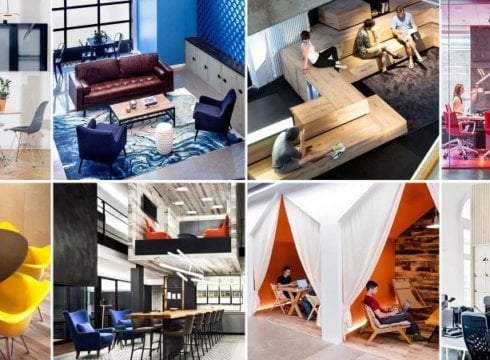Inc42 Daily Brief
Stay Ahead With Daily News & Analysis on India’s Tech & Startup Economy
The office workplace today is witnessing a rapid change led by shrinking densities made possible due to technology resulting in reduced footprints of the work-desk. The rising cost of Real Estate worldwide coupled with shrinking profit margins has driven corporations to rethink the workspace strategy by reducing the per employee desk footprint integrated with work from anywhere programs. With work-from-home and coffee shops also being a non-viable option corporates and workers are forced to adopt new ways of working.
The workplace transformation has begun in earnest and will see the biggest changes in the next 5-7 years as people’s lifestyles change, technology progresses rapidly, intra – city commute times increase, and health and well – being takes center stage. This will position the office worker at the core of all office space solutions.
The top 5-workplace transformations will see the individual employee taking the spotlight.
1. Crowd sourcing as a result of 1GB speed Internet connection will reduce real estate footprint
The technology initiatives by tech giants including Google, Facebook and Microsoft will ensure that everyone across the world will have 1GB Internet connection by 2020. The sea change will ensure that 2 billion additional employable people get integrated into the ubiquitous connected world allowing organizations to crowd source from a global workforce reducing their direct full-time employees and in turn reducing the office space that will be required. The crowd-sourcing phenomenon will further increase the number of freelancers and in turn change the commercial office space requirements evolving from larger footprints to smaller units of space. The freelance / consultant community will still require space to operate their business leveraging the new age co-working concepts and other shared economy spaces.
2) Wearable technology and Artificial Intelligence will redefine the furniture shape, size & use
The traditional desk as we know it will not exist in next 3 years. The laptop and smartphone will transform into voice activated assistant, wearable technology, including wearable glasses, embedded chips, and wrist devices connected with Internet of Things (IoT), the connection of a work surface and individual is likely to be severed. The ability of devices to interact with individual’s preference will provide personal data that will help create furniture solutions that are customized to individual work styles. Chairs will adapt to the individual body type providing maximum ergonomic comfort for enhanced productivity. Work surfaces will change just in time based on the specific use of working, meeting and eating. Space infrastructure including lighting, air conditioning and air quality will adapt to the task at hand, the number of users and work setting. The idle time for desks, conference, cafeteria and training spaces will drop to zero ensuring full utilization of assets and contribute to reducing the real estate square footage required.
3) Video technology and connectivity speed will ensure real presence without travel
Technology related to video communication is fast evolving from video conferencing to holographic 3-D technology that emulates the face to face interaction without the need for physical presence. The dramatic development will ensure that individuals can interact, brain storm, and collaborate to deliver collective results without the need to travel. Individual pods fitted with virtual reality tools will emulate the real-time presence allowing all interactions to be highly productive. With global average internet connection speeds increasing year – on –year and better, more reliable infrastructure in place, video connectivity will emerge as one of the most potent tools for promoting remote working and allowing work to get done faster.
4) Big Data & analytical capabilities of robotics will transform the need to do any routine tasks by humans.
There is a gradual shift towards complex solutions that require multiple scenarios to be evaluated to deliver the outcome. In the future, this trend will be more firmly established with routine tasks being done by robotics that will not require a physical workspace. The office workers will collaborate with machines to deliver simple and complex solutions resulting in a workspace configuration that is suitable for both humans and robots simultaneously.
5) Smart Cities, Smart Buildings, Smart Workspaces will be interconnected with IoT, AI and Robotics
All public and private infrastructure will be interconnected and analysed in real time to understand individual preferences and well-being. The real-time background analytics will allow space to transform, adapt and react to users instantaneously. Safety and user well – being will be the centre pieces of infrastructure design and execution. Successful real estate solutions will have to build technology into the DNA of cities, buildings and spaces.
The future direction highlighted in points above will have far-reaching implication for design, build, consumption and maintenance of space. Organizations will be driven by putting the individual needs and well-being at the heart of all space solutions that deliver zero idle time for the asset. The consumption patterns of real estate will see a dramatic change as connectivity becomes ubiquitous, number of SME’s and freelancers increase, and individual customized solutions becomes the norm driving a complete transformation from organization – driven workspace solutions to individual customized solutions. The concept of individual mass customization that are available just-in-time will become the foundation of real estate in the future.
Note: We at Inc42 take our ethics very seriously. More information about it can be found here.


